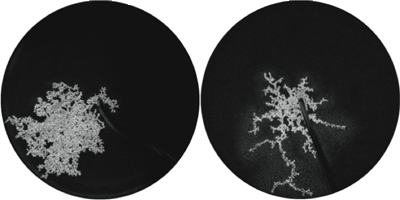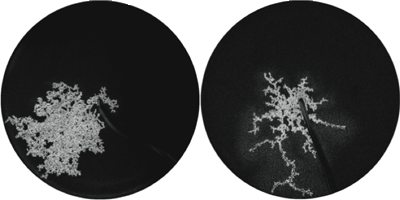Fluid Invasion
The cracks that form in drying soil or paint are evidence of fracture in wet granular materials. Similar fracturing also plays a role in environmentally sensitive scenarios such as extracting petroleum from the deep seas, sequestration, and fracking, where pressurized fluid is injected into rocks to release natural gas.
These are all examples of one fluid displacing another in porous media. While work in recent years has contributed to a clearer understanding of this wide-ranging phenomenon, most of it focused on either rigid porous media or porous materials with a low packing density. In Physical Review Letters, Ran Holtzman and colleagues at the Massachusetts Institute of Technology, Cambridge, address how the fluid-fluid displacement takes place in a frictional granular material at high packing fraction. They injected air into a cylinder containing tightly packed water-saturated glass beads, while varying the injection rate of the air, the size of the beads, and the confinement stress from weights placed on a rigid disk that rests on top of the beads. They observed that there are three ways—distinguished by the pattern of the air’s path through the beads—in which one fluid can invade another: capillary fingering, viscous fingering, and capillary fracturing, which result from competition between the viscous and capillary forces on the one hand and pressure forces and internal friction on the other. The authors’ experiment and scaling analysis show that capillary fracturing is a consequence of the interfacial tension between the fluids and can take place at vanishingly small injection rates, unlike, say, fracking. – Sami Mitra





